Technology
Foldscope: Unfolding The Mysteries Of Science
Anand Ranganathan and Zill e Anam
Jun 04, 2018, 03:21 PM | Updated 03:21 PM IST
Save & read from anywhere!
Bookmark stories for easy access on any device or the Swarajya app.
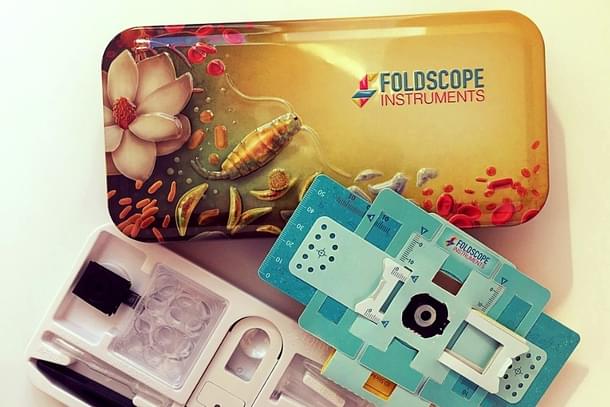
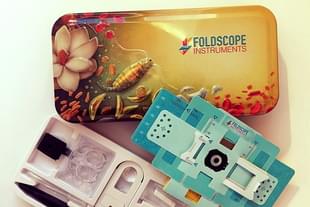
Science and antakshari have much in common, fathered as they are through the simple act of biding time. The human mind turns curious when it idles, when it is not burdened with the anxiety of scouring for the next meal. Soon, the eyes adjust and you look up, and then down, and try to make sense of the world around you. But how do you satiate the curiosity of wanting to know the workings of the inner world, a world that you know exists but one that you cannot see. How do you look within?
The search for an answer to this question begins in ancient Syria and India with the concept of glass and the lens and the understanding of their potential. Glass, for example, finds a mention in the Yajurveda (1200 BCE) as well as the ancient Buddhist texts of Satapatha Brahmana and Vinaya Pitaka. Lens has a more chequered history. The eponymous Nimrud Lens, it has been suggested, was used as part of a telescope by the ancient Syrians (710 BCE). On the other hand, Book III of the Nyaya Sutra (650 BCE) begins thus: A sense is not soul because we can apprehend an object through both sight and touch. Then transpires a scintillating debate on visual perception that contains the following, now iconic, shloka (45):
Aprapya grahanam kachabhrapatalsphatikantaritopalabdheh
"Some say that the eye can perceive a thing even without coming in contact with it by means of its rays, just as things screened from us by glass, mica, membrane, or crystal are seen."
The story of modern optics is incomplete without mentioning the contribution of the tenth century Arab polymath Ibn Al-Haythm and his phenomenal Kitab e Manazir, or Book of Optics. And citing Ibn Al-Haythm is incomplete without the mention of his legendary predecessor Ibn Sahl, now credited with discovering the law of refraction, commonly referred to as the Snell's Law.
Humans, separated by culture and geography, had begun to make sense of light and optics. The development of elemental microscope integrands, however, began a little earlier, when the Romans, while looking through glass of divergent shapes and sizes, came across one that was thick in the middle and thin at the edges. They discovered that an object placed below such a "lens” appeared enlarged. These early lenses were called magnifiers or ‘burning glasses’. Around the same time, the Roman philosopher and satirist Seneca described magnification by a globe of water. Lenses, though, weren't much in common use until the Italian Salvino D’Armate (1258 AD) constructed the first eyeglass. Although this claim has since been disputed, there is ample evidence to suggest that eyeglasses were invented in Pisa and soon spread round the world. Vyasaraya (1520 AD), the patron saint of the Vijayanagara Empire wore glasses, apparently gifted to him by the Portuguese. Meanwhile, the Tanjorians were making spectacles out of quartz crystals.
The existence of the first compound microscope capable of magnifying up to nine times, surfaced in the late 16th century through the work of the Dutch father-son duo of Hans and Zacharias Jansen. These makers of fine spectacles worked out an ingenious design, that included not one, but three lenses secured inside a tube fitted with a sliding mechanism that allowed for easy focussing. A few decades later came the real breakthrough, again courtesy a Dutchman, Anton van Leeuwenhoek. The son of a basket-maker, the self-taught Leeuwenhoek spent all his free time tinkering with glass and trying to grind and shape it into spheres. Thus was born a single-lens microscope capable of magnifying objects up to 270 times their original size. This was an unprecedented advance and Leeuwenhoek sensed it instantly. The mesmerising world of microorganisms was no longer an imaginary world. It was the dawn of a new age – the age where one could look within. Biology would never be the same again.
The next advance arrived a few decades later, in 1665, through the work of the polymath Englishman, Robert Hooke, who published Micrographia, perhaps the single most important Western work to match Newton's Principia in its immediate impact. Indeed, Hooke had very nearly stumbled upon the law of gravity that Newton devised decades later, and when he wasn't co-founding the Royal society or developing a grid system for London or deducing the wave theory of light or the law of elasticity, he went busy constructing a microscope, through which he peered wide-eyed into the invisible world, the world of corks and ants and ticks and fleas and snow. What he saw he drew, and what he drew delighted and terrified in equal measure. Hooke had made humans realise their entitlement of earth was shared by millions of living beings that appeared just as complicated and exquisitely designed. He had delivered the greatest lesson the pursuit of science could ever bestow – a lesson in humility. It truly is a tribute to Hooke's contribution that the numerous advancements that followed in the field of microscopy over the next many centuries – like for example those by Carl Zeiss or Otto Schott – only supplemented Hooke's great discoveries, never overshadowed them.
Hooke made science accessible and fun, and anyone who knows how to do this also knows how impossibly difficult it is. One only has to ask Jim.
Jim Who?
You believe what you see, but what you see is written by those who see what they believe. Well, science is a little different from journalism. Seeing truly is believing, and one man who is on a mission to make this possible for millions is Jim, the co-inventor of the Foldscope.
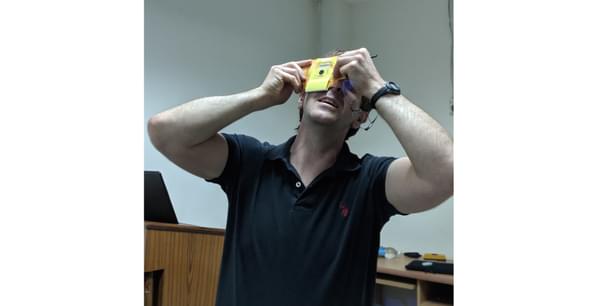
Most modern microscopes are limited by their cost, the technical expertise required to operate them, their size and, most hurtfully, their non-accessibility to the general public. The fact remains that, nearly half a millennia after the basket-weaver's son tried to open the eyes of the world to the workings of the inner realm, it is accessible to only a tiny minority of lab coat-wearing boffins. In an effort to change this, to make microscopy fun and accessible – for that is precisely what it should be – a group of Stanford bioengineering scientists, headed by the Meerut-born and IIT Kanpur alumnus Manu Prakash, has got together and made an ultra-affordable paper microscope. Jim Cybulski is one of them, the proud co-inventor of Foldscope. He is currently on a whirlwind tour of the subcontinent, trying to popularise the Foldscope. The authors had the good fortune of attending his lecture-cum-demonstration recently.
Cybulski co-invented the Foldscope while he was Prakash's PhD student at Stanford. “It was Manu's idea," he recalls. "The inspiration came from field visits around the world where we continually encountered bulky, broken microscopes, or the lack of them entirely. We shared a dream, of making science affordable for everyone, especially in resource poor areas. There ought to be no price barrier between curiosity and scientific exploration. We wanted every single child in this world to carry a microscope in his pocket."
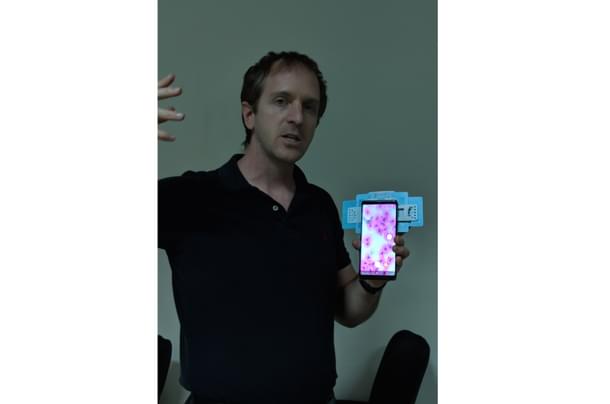
Cybulski’s journey is a fine example of scientific discoveries crammed with lucky coincidences; a small wonder why his colleagues haven’t given him the moniker of ‘Lucky Jim’. To be sure, he is anything but like Jim Dixon, the disinclined university lecturer of Kingsley Amis' iconic novel, Lucky Jim. Before joining Prakash’s lab, Cybulski had never planned to make a microscope, leave alone study biology. He is a mechanical engineer. “My background is very different from what I did at Stanford. I had some previous experience in optics which made it convenient for Manu to hand me this project.”
Cybulski’s mother Judy, who is accompanying him on the India tour, talks of his perennial absence from home. "He is always in the lab. He loves it!"
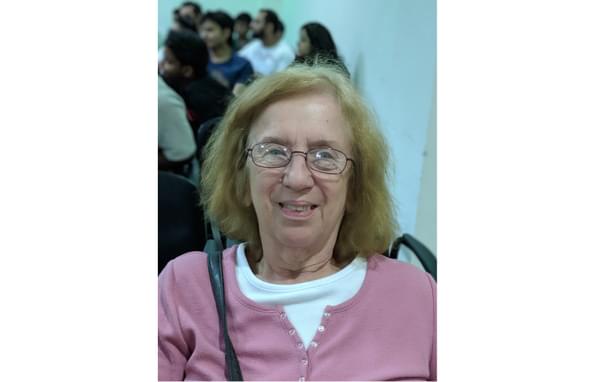
When asked how he is outside of the lab, given the rather dour impression scientists seem to carry with them wherever they go, she remembers fondly Jim Cybulski’s childhood. "Simple things intrigued him immensely. He was always picking up strange and peculiar stuff, trying to make something new out of it."
Judy can take heart. Cybulski hasn't disappointed as an adult.
The Foldscope is made of paper. And the reason why the team decided to use paper, apart from its affordability, is that paper, if folded properly, yields remarkable precision. A microscope could be aligned and made to work in ways that would otherwise require a lot more sophisticated machination. The paper used is coated with poly-propylene, affording it high strength and durability.
The heart of any microscope is quite obviously the lens, and if the idea is to slip in a microscope inside every child's trouser pocket, the overriding concern is the cost. “I randomly searched for any lens, which was as cheap as possible, making the best use of my rate filters on an online selling portal," says Cybulski. "I got lucky to have discovered this tiny glass ball, till then used as a ball bearing to reduce friction in cans. I ordered one; tried it on, and it worked wonders.”
There ought to be no price barrier between curiosity and scientific exploration, had said Cybulski. And he was true to his word. Taking risks helped him to discover the hidden potential of a tiny spherical glass lens, notching up an impressive magnification of 140x. "This can,” he points out, "be increased further if you are using your phone camera."
A resolution of 2 microns is more than sufficient to observe red blood cells. What more can one ask for in a microscope costing less than the price of a Chetan Bhagat book.
On the Foldscope's user-friendliness, Jim explains: "We have tried to keep the design as simple as possible. All you need to do is to mount the sample you wish to observe on a slide, slot it in the Foldscope, focus according to your eye, and observe beautiful images. Presently the Foldscope can be used in three different ways. You can mount the sample on the slide and observe it with your eye against a light source; focus it on a sheet of paper in a dark room and create a real image, which is even more exciting to see; or connect your mobile directly with the Foldscope and view the image on your mobile screen."
The Foldscope is just the bridge one wished for to connect curiosity and scientific exploration. For a hundred rupees, it allows us to explore our planet like never before. In addition to biological samples, a Foldscope is also exceedingly handy for observing and investigating non-biological samples, for example, particulate matter detrimental to air quality, or microscopic crystalline differences that exist between real and fake medications. In India, students in remote areas have begun using Foldscopes to improve crop management simply by studying the leaf and searching for pests. Foldscopes are also being used to identify the microscopic eggs of agricultural pests; catalogue the biodiversity of soil arthropods in the Amazon; spot fake currency and medicine; follow toxic blooms; detect bacteria in water samples; and map pollen diversity in a city landscape. The microscope is no longer the limiting factor; imagination is. Recall that around 85 per cent of the species that supposedly inhabit the earth have never been observed. Foldscope in every pocket aims to cull that ridiculously high percentage. And it is happening already. Thousands of children and adults alike have begun to document and share their Foldscope-discoveries online, in a community named Microcosmos. All discoveries, big or small, carry a citation and the discoverer's name.
There is, however, a problem. Cybulski, self-effacing to a fault, didn’t quite anticipate the overwhelming response to his and Prakash's invention. The supply just can’t keep up with the demand. Foldscope is the next hula-hoop.
Foldscope Instruments Inc is now scaling up the production to 2.5 million Foldscopes by the end of this year. The company plans to set up manufacturing units all over the world. To support Foldscope’s global distribution efforts, the Government of India's Department of Biotechnology (DBT) has stepped in and formed a partnership with Foldscope Instruments. It all started with a Twitter conversation between the then DBT chief Dr K Vijay Raghavan, now the Principal Scientific Advisor to the Prime Minister, and Manu Prakash. Such proactive approach by government functionaries may, quite understandably, come as a rude shock to most of us fed on stories of rocket cones being transported to launch sites by bicycles. Perhaps, things are finally changing in an unchanging India.
DBT has since provided Foldscopes and Foldscope-grants to as many as 445 government schools and colleges across the length and breadth of India.
“We want to help ensure that Foldscope reaches the masses," says Dr Shailja Gupta of the DBT. "I first saw something wiggle under the microscope when I was an undergraduate. It is difficult to describe the emotion; I still remember it clear as day. We don't want our kids to wait that long. Foldscopes are really about providing access to science to the most resource-constraint regions. We are sending them to all corners of India and the response has been heart-warming. You can see it in the eyes of the child, the proud owner of a microscope.”
Siddharth Gupta, one such winner of a "Foldscope grant" aimed at triggering excitement in science through the use of Foldscope, plans to phenotypically characterise mosquitoes in different areas of Delhi and relate them to the diseases they spread. There are hundreds of such ideas, all doable, and all being funded through the Foldscope grants.
Meanwhile, Cybulski and Prakash are currently busy in improving the resolution and magnification of Foldscope by using diverse lenses. They are hoping to soon release Foldscope V3, a version that will facilitate easier mounting of the sample. They are also looking at developing user-specific, targeted Foldscopes that can be used for particular applications, like in the agricultural industry or diagnostics. And the Holy Grail in microscopy that only a few get to sip from, has also not escaped Cybulski’s attention. Live cell imaging. That is, being able to observe samples without fixing. For a hundred rupees, this is going to be the next major revolution. And it won’t be televised; it would be live-streamed on your mobile phones.
Dr Shailja Singh, associate professor at the Special Centre for Molecular Medicine, Jawaharlal Nehru University, New Delhi, and a Malaria expert, is particularly excited about the possibilities a Foldscope can offer. "Observing parasites with a Foldscope is currently not possible due to resolution and magnification issues. But Foldscope is soon going to have a version called the Malariascope. It will have better magnification and resolution, helping us to observe the parasites clearly. We plan to use the Malariascope for diagnostic purposes."
Meanwhile, teachers in the remotest corners of India have taken to Foldscope with a missionary zeal. They can sense that it can change the world; teachers always can.
One such teacher, Pandiarajan, recently wrote a letter of appreciation to Prakash, reproduced below with permission:
Dear Manu Greetings
I am happy to touch with you in this mail. My English not Good. So Pleace. Dear Manu Our Eden Science club got Foldscope from Mr Sam ICMR on December 2015. Our club members eagerly involved in foldscope finding. I also motivate them. At the mean time we don’t have android mobile. 2016th January Mr Sam came back to our club and gave an android mobile (Broken But functioning). He engorged them. It is very useful for our club members and me also.
At the same time Dr S Krisnasamy, Dr S. Dinakarn helps our club members and Gide them. Our members registered the images six or seven month in the year of 2016. We thought why we not ran the exhibition? We plane to exhibition. At the same time you sent 100 Foldscope. So We plane Exhibition and Training 2016th November 11, 12 and 19th November. Dr Uthra helps to us economical sport from her college. These programs were great success. So we took more exhibitions and Training some more places. We recorded in a note book. Thank for you and Jim and Dr SK, Dr Dinakaran, Dr Sam and Dr Uthra.
By.
Mo. Pandiarajan Madurai.
Pandiarajan and his club have since taken the Foldscope to 53,000 students. He may have communicated with Prakash through broken English, for which he was needlessly apologetic, but the language with which he connects with thousands of wide-eyed children is a universal one. It is the language of science. And no grammar Nazi can fault it.
Witnessing the excitement Jim is greeted with at his lectures and demonstrations, one can't help but wonder what Hooke would have thought of it all, that half a millennia in the distant future, millions would see the wonders of mother earth, in real time, on their mobile phones, connected to each other, discussing their thrilling discoveries and findings, and all because of folded paper and a dirt-cheap speck of polished glass.
Knowing Hooke, he would have nodded in respect. Gently. And then returned his eye to the eyepiece. There was work to be done. In science, there always is.
Anand Ranganathan is a scientist and an author. Zill e Anam is a graduate student in Molecular and Microbiology.
Authors' Note:
1. Foldscope can be ordered from https://www.foldscope.com/; Indian schools may contact the Department of Biotechnology, Government of India for further updates and pricing.
2. Disclosure: Dr Shailja Singh is a colleague at the Special Centre for Molecular Medicine.
3. Disclosure: The authors are recipients of a DBT research grant."
Anand Ranganathan is a scientist and an author. Zill e Anam is a graduate student in Molecular and Microbiology.





